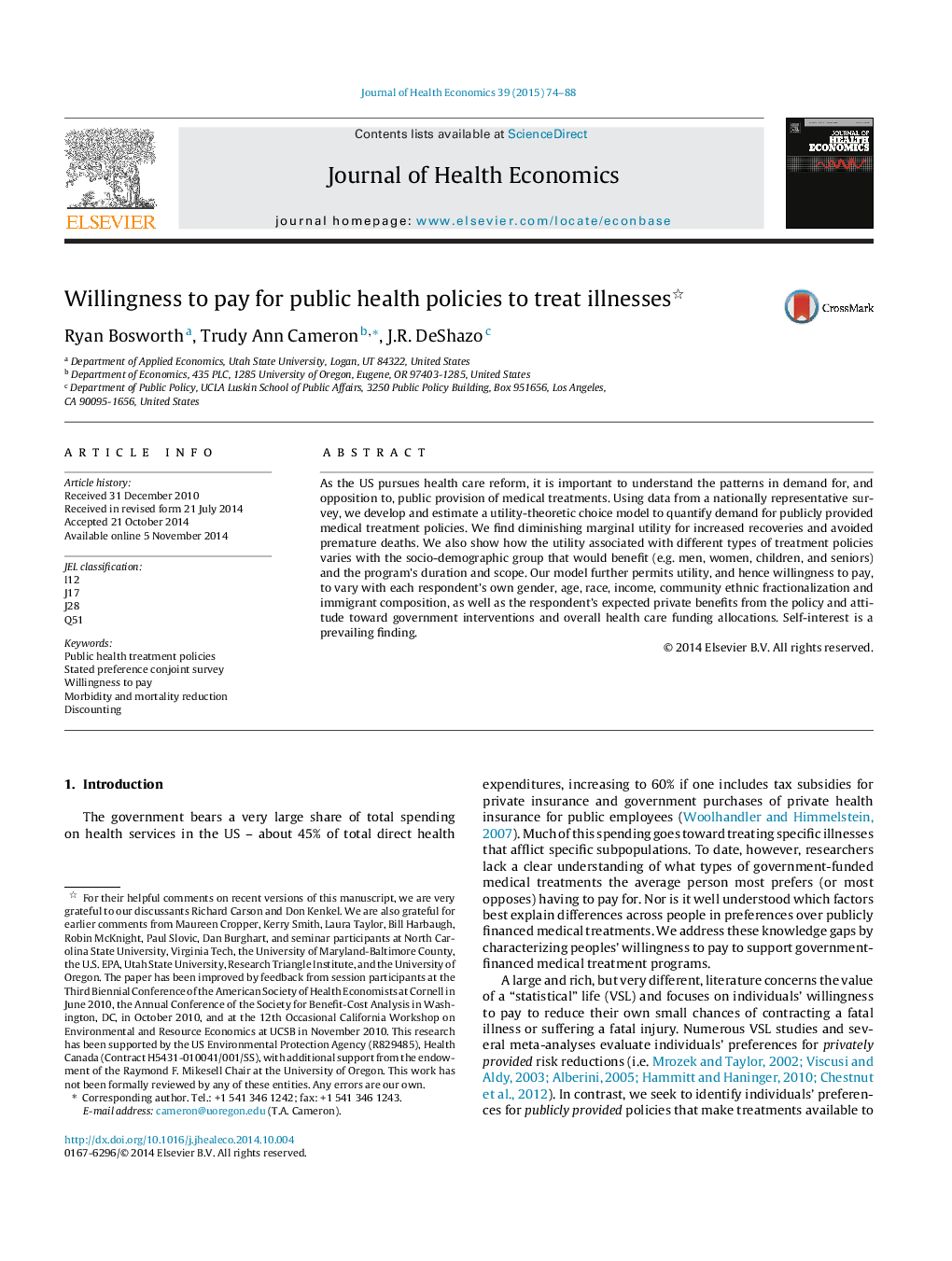| Article ID | Journal | Published Year | Pages | File Type |
|---|---|---|---|---|
| 961834 | Journal of Health Economics | 2015 | 15 Pages |
Abstract
As the US pursues health care reform, it is important to understand the patterns in demand for, and opposition to, public provision of medical treatments. Using data from a nationally representative survey, we develop and estimate a utility-theoretic choice model to quantify demand for publicly provided medical treatment policies. We find diminishing marginal utility for increased recoveries and avoided premature deaths. We also show how the utility associated with different types of treatment policies varies with the socio-demographic group that would benefit (e.g. men, women, children, and seniors) and the program's duration and scope. Our model further permits utility, and hence willingness to pay, to vary with each respondent's own gender, age, race, income, community ethnic fractionalization and immigrant composition, as well as the respondent's expected private benefits from the policy and attitude toward government interventions and overall health care funding allocations. Self-interest is a prevailing finding.
Related Topics
Health Sciences
Medicine and Dentistry
Public Health and Health Policy
Authors
Ryan Bosworth, Trudy Ann Cameron, J.R. DeShazo,
